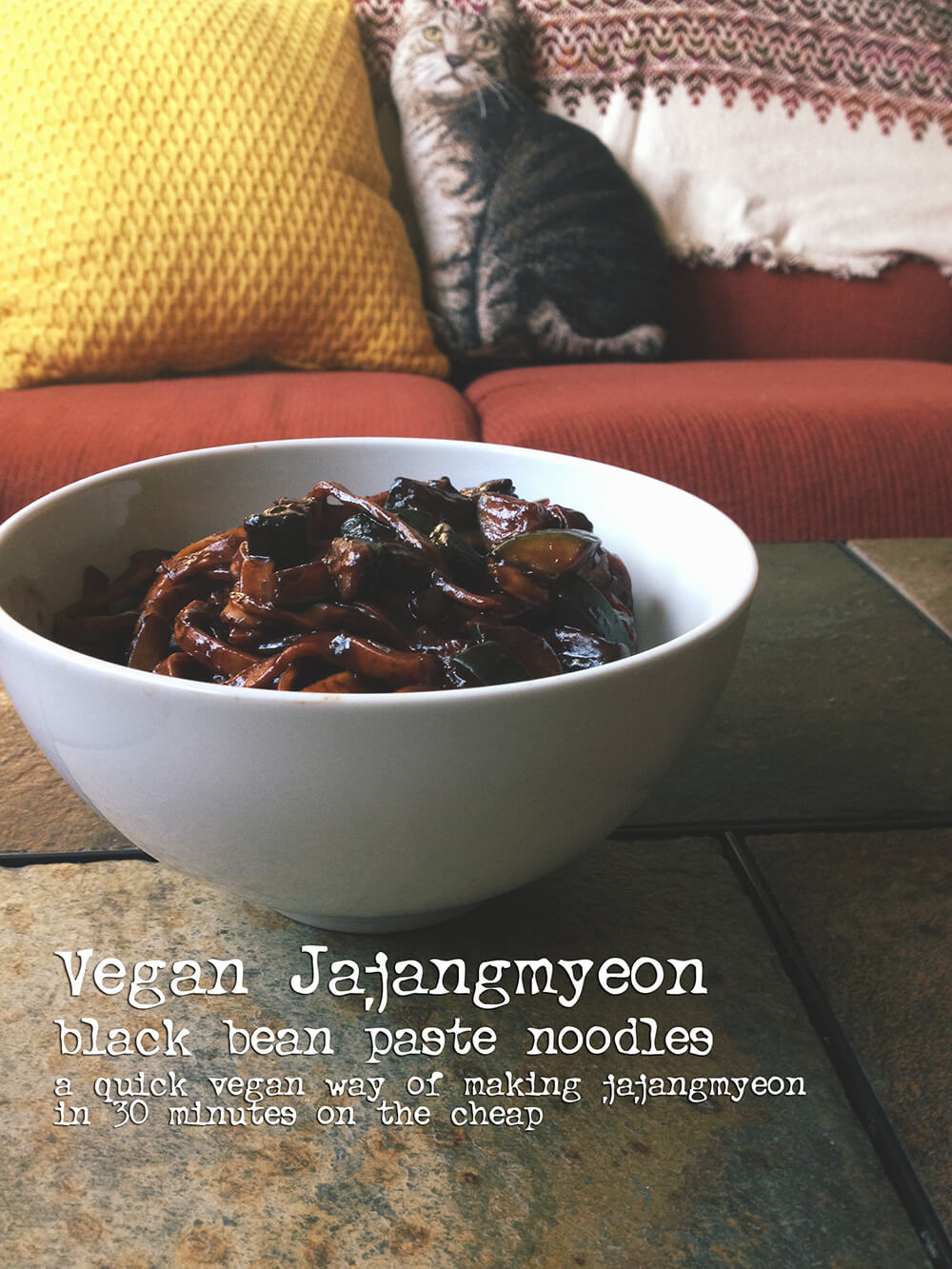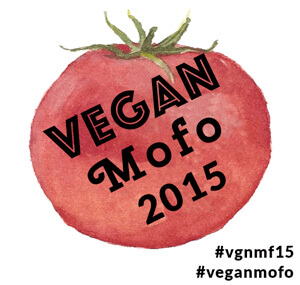I first was exposed to it when I was little. My Aunt Hannah, who is Korean, brought over some “black spaghetti,” as she called it. The black spaghetti looked like packets of ramen, but instead of a soup, it was drained and covered in a sauce. I remember her teaching me the “best” way of cooking it, and going to the local Asian Market snatching them up. Fast forward to 2007. I watched the Korean Drama Coffee Prince. The first episode featured a Jjajangmyeon eat off, and dawned on me what my “black spaghetti” really was.

At the time, there weren’t many online sources for the dish and when checking out local Korean restaurant, none actually had the dish on their menu. The reason is that Jajangmyeon is based on a Chinese dish, Zhaziangmian. The original Zhaziangmian dish uses hoisin sauce, soy sauce, and various bean pastes to get the black sauce. The Korean version uses chunjang, which is a black bean sauce that is much sweeter than it’s Chinese counterpart. There are many differences, but today, you are likely to see Jajangmyeon at a Chinese restaurant in Korea. Think of it a little bit like General Tso in the US, distinctly American in it’s own right but you won’t find it anywhere other than a Chinese food shop.
Jajangmyeon is a pretty unhealthy dish, truth be told. Originally, the dish is made with lard, but is more commonly uses lots of oil instead. The first recipe I ever found said to “thin the black bean paste by adding oil” to it. The chef said to not be “stingy” with the oil. No defined amount was listed. I’ve found recipes that used equal amounts oil for black bean paste. Because of it’s high calorie-high fat content, it has a reputation that is comparable to pizza or mac and cheese in the US. For example it is a common food to get when moving into a new place, much like everyone in the US calls up for pizza delivery.
Jajangmyeon is also associated with single guys. There is even a “black day” in Korea revolving around the dish and single guys. For anyone who doesn’t know anything about Asian holidays, Valentines Day is specifically for girls to give boys chocolate to express their love. A month later there is White Day which is specifically for boys to give girls white chocolate or mint flavored candies. Then the next month is Black Day, where all the single guys in Korea go out and eat Jajangmyeon together.
But before you get freaked out by this meal since I mentioned how oily it is, my version isn’t too bad. I have basically cut out all oil other than sauteing the vegetables. I put a larger ratio of vegetable to noodles, and removed potatoes (why put a starch in there when you have starchy pasta?) I use normal noodles, but if you really want to cut on those calories too, you can use a low-calorie alternative like Kelp Noodles. I took out the starch in the recipe, making the sauce thinner, but I will provide a quick note in the recipe how to add it, if you want a thicker sauce. Over all, I made the first trial dish, and ask my husband “How can I improve it? What do you like or dislike?” I got a confused glance “I don’t know what you are talking about, this is the best one you made yet” Did we convince you yet? On to the recipe!

- 1 lb fresh Chinese noodles *
- 1 tbsp olive oil
- 1 medium onion diced
- 18 mushrooms diced
- 3 small zucchini diced
- 1/3 cup black bean paste
- 2 cup vegetable stock
- 1 tbsp arrowroot or cornstarch
- 1 lb tofu cubed (pressed if desired)
1 If you are using dried noodles you will want to start a pot of boiling water and cook as instructed on the package. If you are using fresh noodles, inspect them for hardness. You may want to blanch or lightly cook them if they are too dried out**2 In a wok heat 1 tbsp of oil, until very hot. Add the diced onion and saute until translucent, about 4 minutes. Add the mushrooms and saute until soft and they release their liquids, about 5-7 minutes. Add the zucchini and saute till slightly soft, about 3 minutes.3 Mix the tablespoon of arrowroot with 1 cup of stock. Toss the black bean paste, 1 cup stock, and arrowroot mix into the pan with the vegetables. Stir until mixed.4 Add the diced tofu, gently stirring making sure they are coated with the black bean mixture. Bring to a boil and reduce heat for 10 minutes, stirring occasionally.5 To serve you have two options. You can stir the noodles in the wok making sure they are thoroughly coated. I recommend this with a big party. The other option is to place the plain noodles on a plate and add the black bean veggies on top.** This way you can keep the noodles separate from the sauce when storing leftovers.
* You can't find Chinese noodles at an Asian Food Market. They are usually in the refrigerator section. If you can't find them, I would recommend cooking the noodles separately in a pot of water. And in the spirit of making jajangmyeon a cheap eat, feel free to use any long noodle you can get your hands on. Linguini works the best out of all the western styled pastas. Stay away from really thin noodles.** If you plan on serving your noodles dry with the veggies on top, you will want to make sure the noodles are blanched or cooked for minute or so, regardless of how fresh they are. Fresh noodles are still a little undercooked, and need to be either stir-fried or boiled.















Bish Chan
I just use the oil to prefry the bean paste and then the paste separates from the oil quite easily and then use the oil to fry the veggies. While a little oil is vital to the paste i find it too greasy when there is too much. In the past i can see why they used lard as it gave people fuel for manual labour and in certain amounts it was healthy.
Jennifer
Yes, lard and oils were much more important in the past when we were more physically active. I am more prone to stir fry the paste in a little oil if I am going to saute some meat and shrimp into the noodles, but this is more of my easy and quick weekday way to make this dish.
alice
oh my gosh I’m literally watching that episode of Coffee Prince right now 😂 that’s why I looked this up!